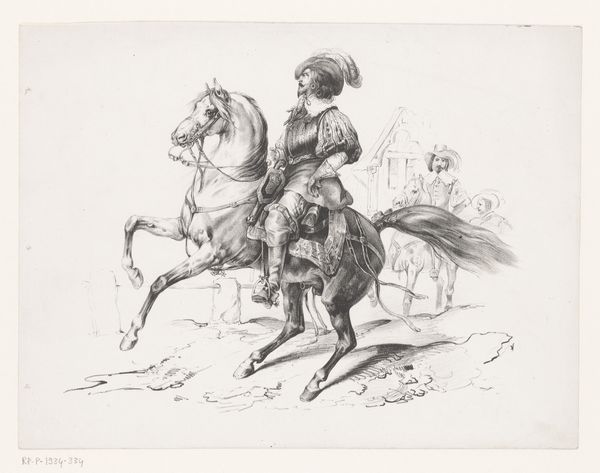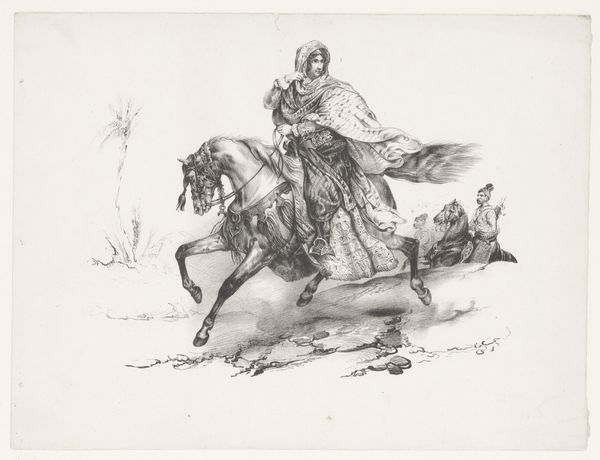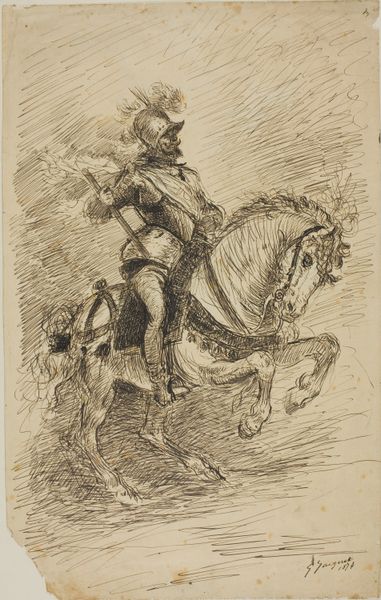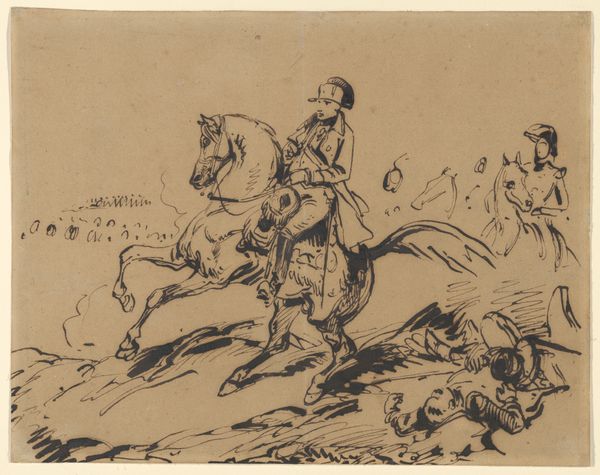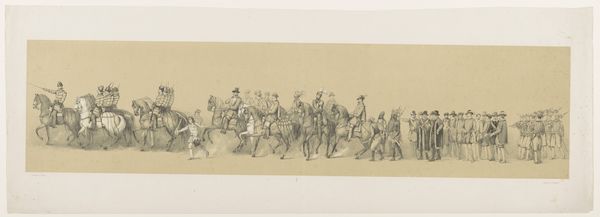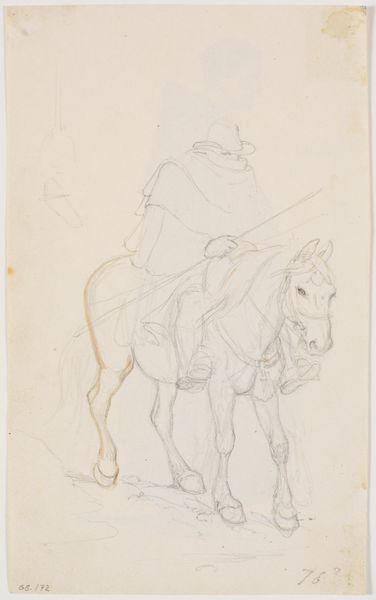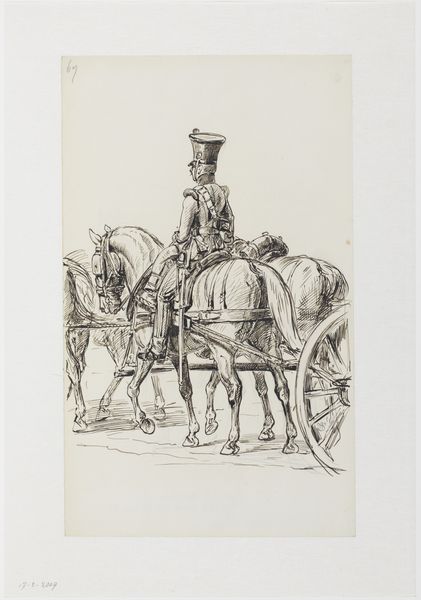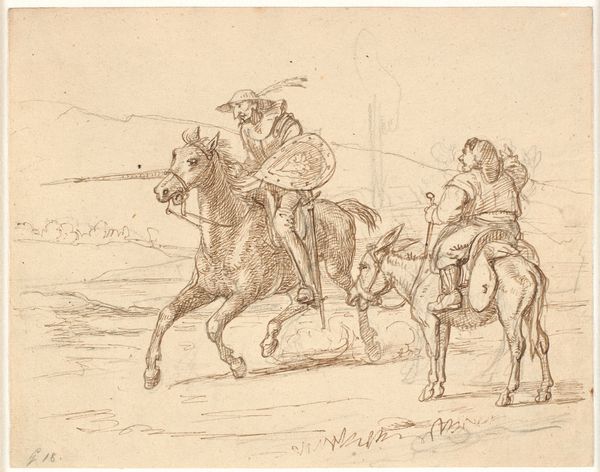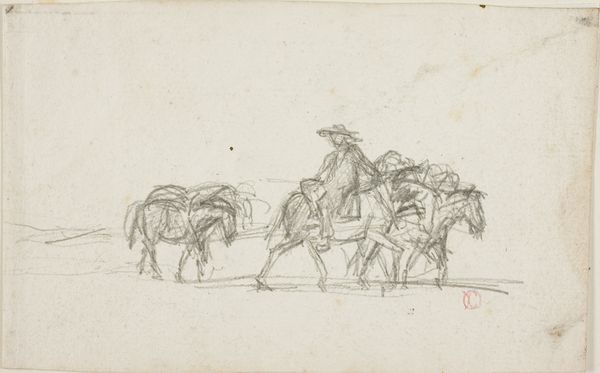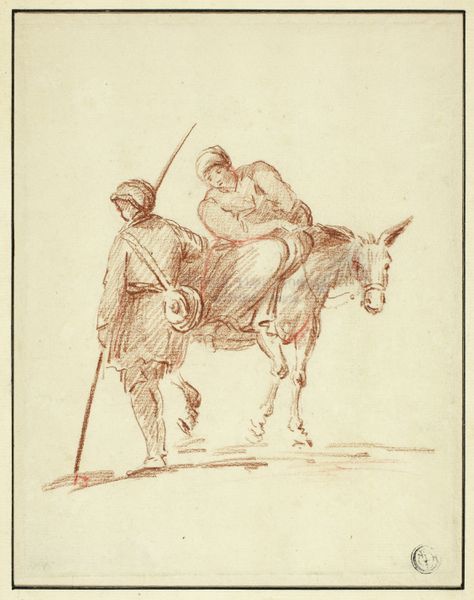
drawing, ink, pencil
#
portrait
#
drawing
#
ink drawing
#
animal
#
landscape
#
ink
#
pencil
#
horse
#
history-painting
#
realism
Dimensions: height 332 mm, width 200 mm
Copyright: Rijks Museum: Open Domain
Curator: Willem Constantijn Staring's "Rijdende artillerie in galop," which translates to "Riding Artillery in Gallop," executed sometime between 1857 and 1916 using ink and pencil, presents an evocative snapshot of military life. Editor: The dynamic energy jumps off the page. It feels almost like a study in controlled chaos, the lines themselves practically vibrate with the horses' movement. Curator: Staring was very much influenced by the tumultuous climate of his time, when the specter of war and the military permeated nearly every aspect of social life. This drawing offers insight into the societal expectations around military prowess and displays the glorification of armed conflict, which very often masked more insidious practices and power dynamics. The composition itself reflects the complex relationship between individual agency and collective force. Editor: I see that, but my immediate impression is focused on the technique. Look at the hatching and cross-hatching; Staring's control of light and shadow with such simple means—ink and pencil—is really masterful. He suggests so much weight and momentum with these very precise applications. The composition guides the eye from the detailed foreground horses to the more suggested forms in the background. Curator: And I think that's where we can delve into deeper discussions about power, identity, and control as being performed for an implied audience. The central figure raising the whip could signify dominance, perhaps reflecting on how control is imposed not just over the animals, but extends to other marginalized groups in society. We must think of class, gender, and coloniality. Editor: I find your interpretation insightful. However, consider the line. The whip almost reads like a continuation of the lines that define the horses; maybe the artist intended to capture that unity. Each stroke contributes to the rhythm and pace. Curator: Well, both elements need to be investigated in parallel to each other. Editor: It seems the sketch achieves something quite profound, transcending its immediate military subject. Curator: Yes, and by considering those parallels and divergences we acknowledge art’s enduring significance, its ability to resonate and reflect our deepest realities.
Comments
No comments
Be the first to comment and join the conversation on the ultimate creative platform.
